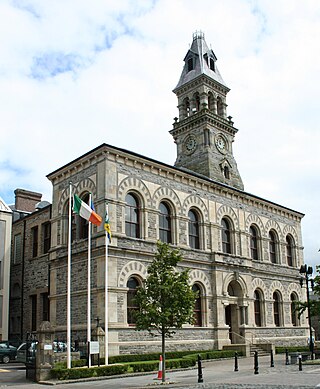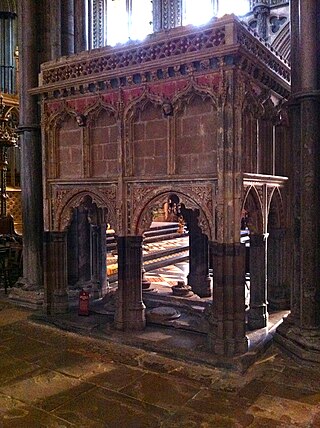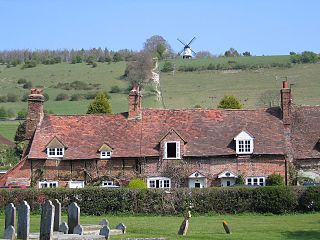This article needs additional citations for verification .(January 2024) |
| |||||
| Centuries: | |||||
|---|---|---|---|---|---|
| Decades: | |||||
| See also: | Other events of 1245 List of years in Ireland | ||||
Events from the year 1245 in Ireland.
This article needs additional citations for verification .(January 2024) |
| |||||
| Centuries: | |||||
|---|---|---|---|---|---|
| Decades: | |||||
| See also: | Other events of 1245 List of years in Ireland | ||||
Events from the year 1245 in Ireland.

Earl Marshal is a hereditary royal officeholder and chivalric title under the sovereign of the United Kingdom used in England. He is the eighth of the great officers of State in the United Kingdom, ranking beneath the Lord High Constable of England and above the Lord High Admiral. The dukes of Norfolk have held the office since 1672.

The Lord High Steward is the first of the Great Officers of State in England, nominally ranking above the Lord Chancellor.
The Lord High Chancellor of Ireland was the highest judicial office in Ireland until the establishment of the Irish Free State in 1922. From 1721 to 1801, it was also the highest political office of the Irish Parliament: the Chancellor was Speaker of the Irish House of Lords. The Lord Chancellor was also Lord Keeper of the Great Seal of Ireland. In all three respects, the office mirrored the Lord High Chancellor of Great Britain.

Earl of Kingston is a title in the Peerage of Ireland. It was created in 1768 for Edward King, 1st Viscount Kingston. The Earl holds the subsidiary titles Baron Kingston, of Rockingham in the County of Roscommon, Viscount Kingston, of Kingsborough in the County of Sligo, Baron Erris, of Boyle in the County of Roscommon, and Viscount Lorton, of Boyle in the County of Roscommon, also in the Peerage of Ireland. He is also a baronet in the Baronetage of Ireland. Between 1821 and 1869 the earls also held the title Baron Kingston, of Mitchelstown in the County of Cork, in the Peerage of the United Kingdom.

Sligo is a coastal seaport and the county town of County Sligo, Ireland, within the western province of Connacht. With a population of 20,608 in 2022, it is the county's largest urban centre and the 24th largest in the Republic of Ireland.

John FitzGibbon, 1st Earl of Clare PC (Ire) was Attorney-General for Ireland from 1783 to 1789 and Lord Chancellor of Ireland from 1789 to 1802.

Westport House in Westport, County Mayo, Ireland, is a Georgian country house, historically the family seat of the Marquess of Sligo and the Brownes. The house was designed by the architect Richard Cassels with later additions by Thomas Ivory and James Wyatt.
This is a list of people who have served as Lord Lieutenant of Sligo.

Luttrellstown Castle, dating from the early 15th century, is located in Clonsilla on the outskirts of Dublin, Ireland. It has been owned variously by the eponymous and notorious Luttrell family, by the bookseller Luke White and his descendants Baron Annaly, by the Guinness family, the Primwest Group, and since 2006, by JP McManus, John Magnier and Aidan Brooks. The castle has hosted visits by Queen Victoria in 1844 and 1900, and its media profile was raised when Victoria Adams married David Beckham there on 4 July 1999. The demesne's current owners converted the castle and estate into a 5-star resort.
Events from the year 1318 in Ireland.
Events from the year 1257 in Ireland.

John Hotham was a medieval Chancellor of the Exchequer, Lord High Treasurer, Lord Chancellor and Bishop of Ely. He was also the effective Governor of Ireland for a time.
Events from the year 1338 in Ireland.
Events from the year 1645 in Ireland.

Howe Peter Browne, 2nd Marquess of Sligo, was an Anglo-Irish peer and colonial governor, styled Viscount Westport until 1800 and Earl of Altamont from 1800 to 1809.
Maurice Fitzmaurice FitzGerald I, 2nd Lord of Offaly was an Anglo-Norman peer, soldier, and Justiciar of Ireland from 1232 to 1245. He mustered many armies against the Irish, and due to his harsh methods as Justiciar, he received criticism from King Henry III of England. He was succeeded as Lord of Offaly by his son, Maurice FitzGerald, 3rd Lord of Offaly.
Francis Taaffe, 3rd Earl of Carlingford, was 4th Viscount Taaffe, of Corren, and 4th Baron of Ballymote and an army commander and politician of Irish descent in the service of Emperor Ferdinand III in the Austrian capital Vienna and later of Duke Charles IV of Lorraine in Nancy.

Geoffrey de Turville or de Tourville was an English-born judge and cleric in thirteenth-century Ireland, who held office as Bishop of Ossory and Lord Chancellor of Ireland, and was noted as an extremely efficient administrator. His career has been described as an excellent example of what a clerk in the royal service in that era might hope to accomplish.
Events from the year 1237 in Ireland.
Events from the year 1238 in Ireland.